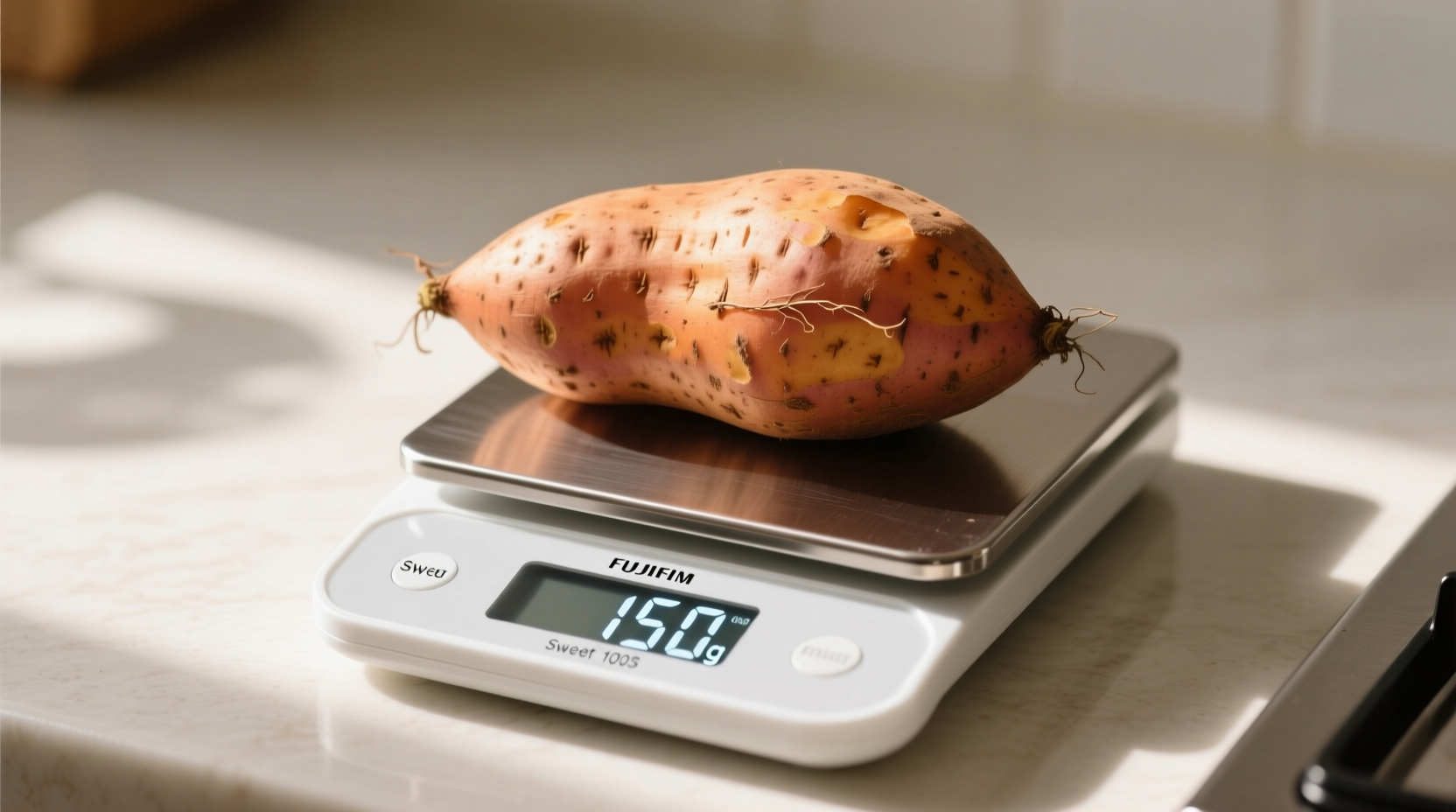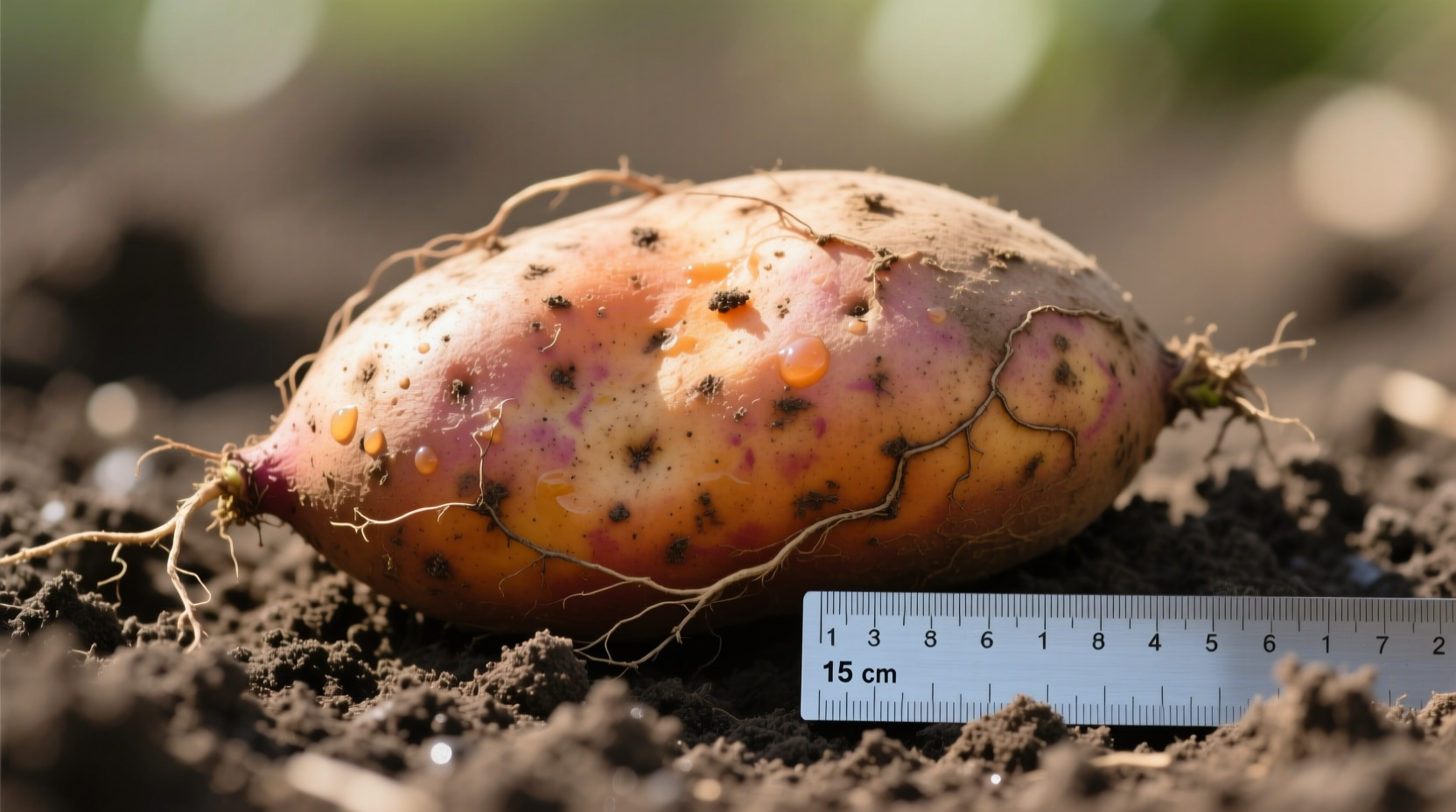Understanding sweet potato weights matters more than you might think. Whether you're following a recipe that specifies "one medium sweet potato" or tracking nutritional intake, knowing exact measurements prevents cooking mishaps and ensures accurate portion control. Let's explore the precise weights you need for culinary success.
Standard Sweet Potato Weight Measurements
When recipes call for "one sweet potato," they're usually referring to a medium-sized specimen. But what does that actually mean in measurable terms? The USDA provides standardized measurements that professional chefs and home cooks rely on:
| Sweet Potato Size | Weight in Grams | Weight in Ounces | Approx. Raw Volume |
|---|---|---|---|
| Small | 100-130g | 3.5-4.6oz | ½ cup diced |
| Medium (most common) | 130-180g | 4.6-6.3oz | ¾ cup diced |
| Large | 180-270g | 6.3-9.5oz | 1¼ cups diced |
| Jumbo | 270g+ | 9.5oz+ | 1¾+ cups diced |
This standardized sizing comes from the USDA FoodData Central database, which nutrition professionals use for accurate dietary calculations. Notice how the weight range varies significantly—this explains why your "medium" sweet potato might yield more or less than expected in recipes.
Why Sweet Potato Weight Varies: Key Factors
Not all sweet potatoes weigh the same, even within the same size category. Three primary factors create this variation:
1. Variety Differences
The orange-fleshed Beauregard variety (most common in US supermarkets) tends to be heavier than Japanese sweet potatoes with their pale skin and yellow flesh. According to agricultural data from USDA Economic Research Service, Beauregard sweet potatoes average 15-20% more weight than Japanese varieties of comparable dimensions.
2. Moisture Content
Freshly harvested sweet potatoes contain more moisture than cured ones. Commercial sweet potatoes undergo a curing process that reduces moisture content by approximately 5-7%, which slightly decreases their weight while concentrating flavors. This explains why farmer's market sweet potatoes often weigh more than grocery store varieties of similar size.
3. Shape and Density
Long, slender sweet potatoes typically weigh less than shorter, plumper ones of the same length. The densest varieties (like Covington) can weigh up to 25% more than less dense types (like Garnet) when measured by volume.

Practical Applications: Using Weight Measurements in Your Kitchen
Knowing exact sweet potato weights transforms your cooking accuracy. Here's how to apply this information:
Recipe Precision
When a recipe specifies "200g mashed sweet potato," don't guess. Weigh your potato before cooking—raw sweet potatoes lose approximately 15-20% of their weight during baking due to moisture evaporation. For example, a 180g raw sweet potato yields about 145g cooked.
Nutritional Tracking
Nutrition labels and databases reference raw weights. A medium sweet potato (130g raw) contains about 103 calories, 24g carbohydrates, and 400% of your daily vitamin A. If you're tracking macros, weighing provides accuracy that "one potato" estimates can't match.
Batch Cooking Efficiency
When preparing multiple sweet potatoes for meal prep, weighing ensures consistent portions. For perfect roasted sweet potato cubes, aim for 150-180g per serving. This creates uniform cooking without some pieces burning while others remain undercooked.
Special Considerations for Baking and Cooking
Cooking method significantly impacts final weight and texture:
- Baking: Loses 15-20% weight through moisture evaporation
- Boiling: Absorbs water, potentially increasing weight by 5-10% initially before losing moisture during cooling
- Roasting: Highest moisture loss (up to 25%) due to higher temperatures and exposed surface area
Professional chefs like those at the Culinary Institute of America recommend weighing sweet potatoes before cooking for recipe accuracy, then adjusting seasoning based on the final cooked weight.
When Weight Matters Most: Critical Cooking Scenarios
Certain recipes demand precise sweet potato measurements:
- Baking applications: In cakes and breads where sweet potato replaces oil or butter, a 10% weight difference can dramatically affect texture
- Infant food preparation: Pediatric nutrition guidelines specify exact weights for appropriate portion sizes
- Dietary restrictions: For diabetes management, carbohydrate counting requires precise weight measurements
- Commercial food production: Consistent product quality depends on standardized ingredient weights
For everyday roasting or mashing, eyeballing works fine. But when precision counts, grab your kitchen scale—it's the secret weapon professional cooks use for consistent results.
Pro Tips for Measuring Sweet Potatoes Without a Scale
Don't have a kitchen scale handy? Use these practical estimation methods:
- A medium sweet potato (130-180g) should fit comfortably in the palm of an average adult hand
- When standing upright, a medium sweet potato reaches from the first knuckle to the second knuckle of your index finger
- For volume measurements: 100g raw sweet potato ≈ ½ cup diced, 150g ≈ ¾ cup diced
Remember that these are approximations. For critical applications like baking or nutritional tracking, a $10 kitchen scale pays for itself in recipe success.
Conclusion: Mastering Sweet Potato Measurements
Understanding sweet potato weights transforms your cooking from guesswork to precision. By recognizing that a medium sweet potato weighs 130-180 grams, you can follow recipes accurately, track nutrition properly, and achieve consistent results every time. Keep this guide handy next time you're selecting sweet potatoes at the store or prepping them in your kitchen—the difference between a good dish and a great one often comes down to precise measurements.











 浙公网安备
33010002000092号
浙公网安备
33010002000092号 浙B2-20120091-4
浙B2-20120091-4